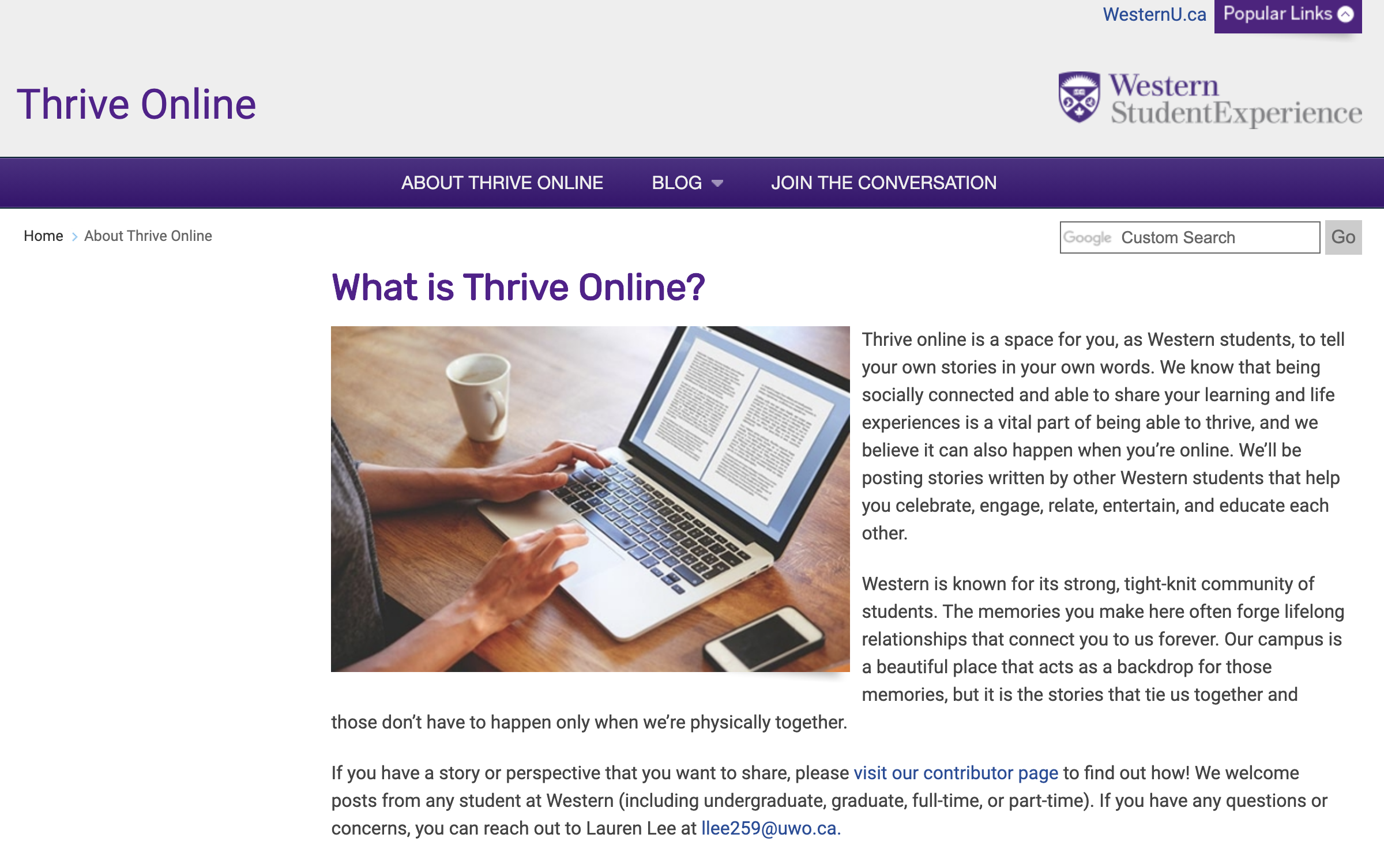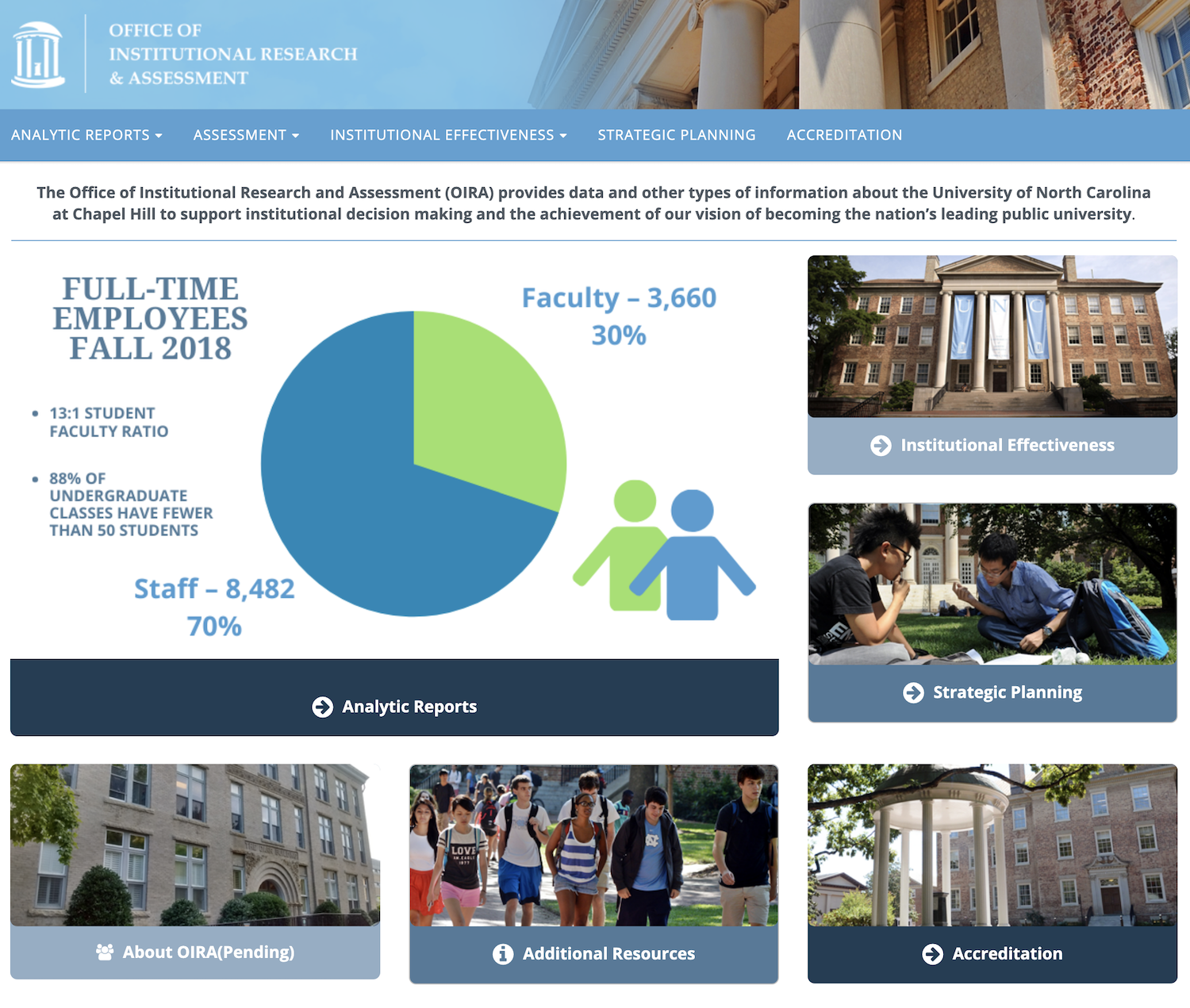Evidence of Student Learning
Evidence of student learning includes results of assessment activities. This may include evidence of indirect (e.g. surveys) and direct (e.g. portfolio) student learning as well as institutional performance indicators (e.g. licensure pass rate). Transparent evidence of student learning is:
- Explained, analyzed, and interpreted in lay person’s language
- Contextualized to clarify what the results mean to the institution and to student learning
- Presented using both text and graphics when appropriate
- Disseminated and summarized for different groups, cohorts of students, and compared with peer institutions or programs if appropriate
- Prominently posted or linked in multiple places across the website
- Updated regularly to reflect current results
Receptive to feedback on the meaning and interpretation of the evidence
Institutional Examples
Institutional Examples
Western University’s Thrive Online webpage is a NILOA Featured Website as an example for how evidence of student learning can be shared in different ways; in this case, by letting students tell their learning stories. Thrive Online is a space for Western University students to share their learning stories and life experiences so that peers can celebrate, engage, and educate each other even while not physically together on campus. The website stresses the values of joy, courage, curiosity, equity, decolonization, empathy, hope, humility, and integrity across the platform. Thrive Online is informed by the Thriving Framework, and it is guided by the tenets of maintaining positive perspectives, academic determination, engaged learning, social connectedness, and diverse citizenship to help contribute to the learning process and students well-being.
Students who contribute to Thrive Online can have their pieces published in the Scholars’ Life, print magazine, which can then go into their resume/CV. Students are also encouraged to submit course blog assignments, or share observations and insights from coursework. Students can post on various topics, including academics, culture and community, student experiences, wellness, and more. There is also a Digital Community Content Creation Manual that may be helpful for students authoring content for online courses, as well. For their efforts in centralizing the student experience and creating space for student participation, Western University’s Thrive Online website is an institutional example of the Transparency Framework’s Evidence of Student Learning component.
The Office of Institutional Research and Assessment (OIRA) from the University of North Carolina at Chapel Hill is NILOA’s first Featured Website of 2020! The mission of OIRA is to support institutional decision making and the achievement of our vision of becoming the nation’s leading public university through disseminating timely institutional data and information. All departments and programs across UNC Chapel Hill must have learning outcomes statements accompanied by appropriate assessment plans to measure those outcomes and identify areas of improvement. In support of this, the OIRA provides assessment resources for academic programs and examples, and additional assessment resources. Additionally, the university’s assessment policies are readily available for faculty, staff, and administrators to read, including useful definitions, supporting materials, and an assessment reporting calendar.
UNC Chapel Hill’s OIRA website also features various interactive reports accompanied by definitions and footnotes, when applicable, so readers can easily understand the data. In support of institutional effectiveness, the OIRA website provides a snapshot of how well the institution is meeting its student success goals and strategic plan. The results of various surveys, including diversity, student engagement, and alumni surveys, are offered and contextualized with information regarding the purpose and scope of each survey. Finally, information on the institution’s accreditation is supported by additional documents, including communications with the Southern Association of Colleges and Schools Commission on Colleges (SACSCOC), program accreditation status, and links to SACSCOC’s accreditation guidelines and requirements. For these reasons, the Office of Institutional Research and Assessment at the University of North Carolina at Chapel Hill is a Featured Website in the categories of Centralized Assessment Repository, Communication, and Creativity. The webpage is also an institutional example for the NILOA Transparency Framework in the Evidence of Student Learning component.



